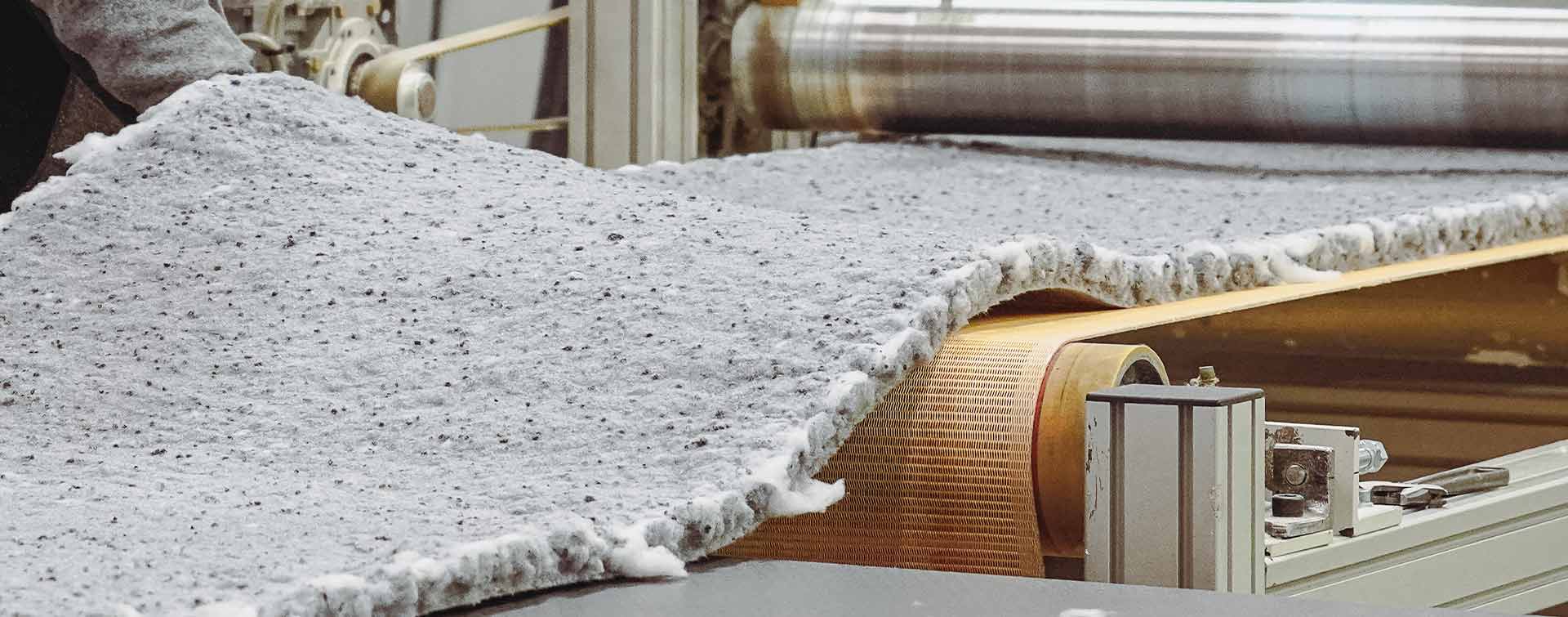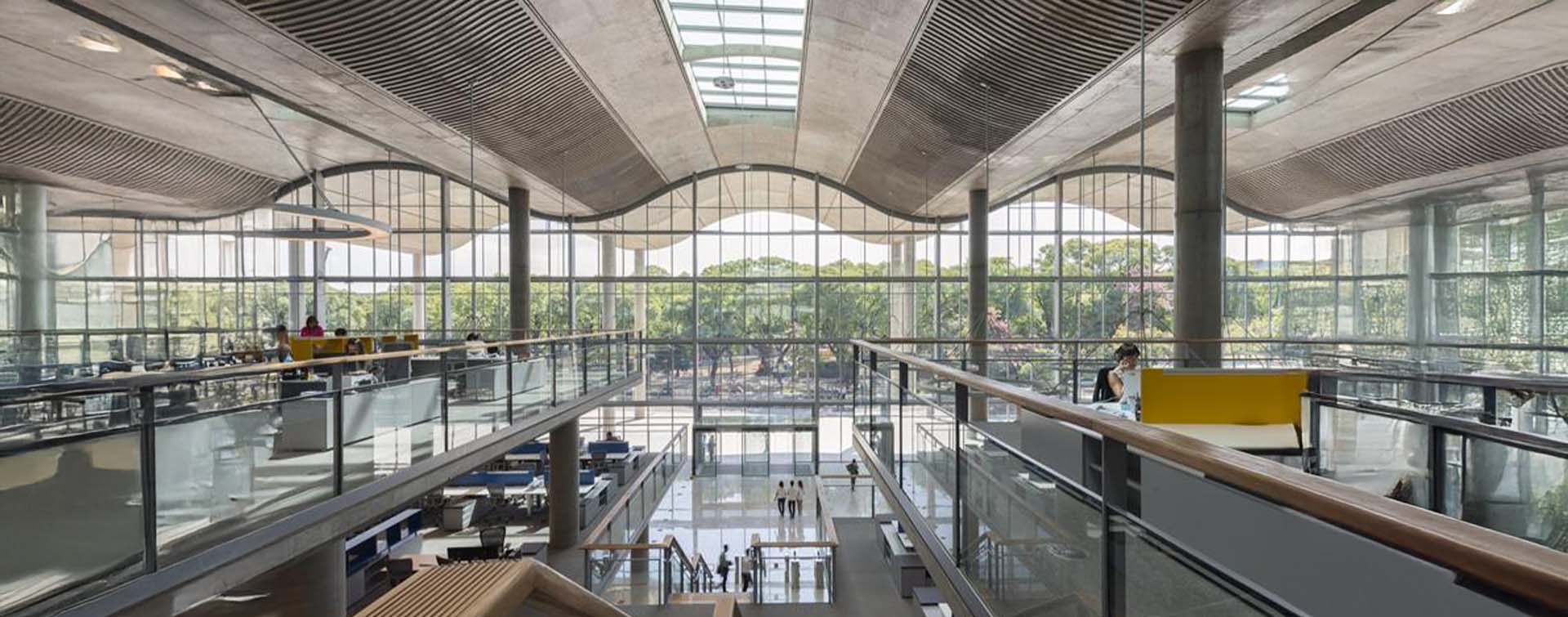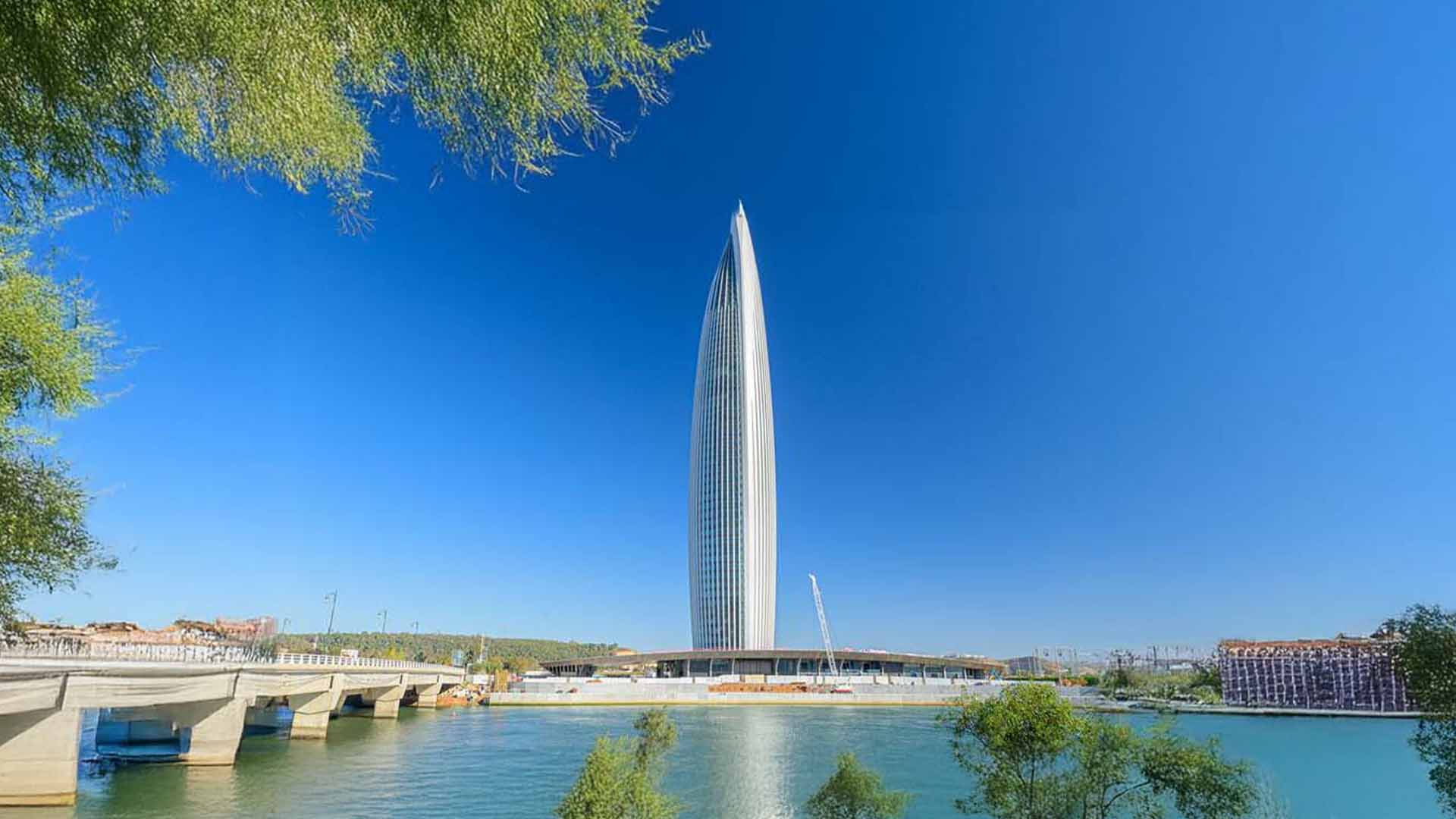 8 min
8 min
Achieving significant carbon reduction throughout a building’s lifecycle often requires unconventional materials and methods, blurring the lines between profitability and project economics. But, when sustainable practices are effectively integrated, they don’t always add to project costs. In fact, evidence suggests that decarbonization and budget control can even go hand in hand…
What if sustainability and cost weren’t inherently linked?durabilité et coût n’étaient pas liés ?
This question was at the core of a recent study by the Green Building Council of Denmark, which sought to determine whether a building’s sustainability level directly impacts construction costs. The study examined 37 buildings certified under the DGNB building sustainability standard (a German certification assessing the sustainability of buildings). The graph below shows the projects according to their construction cost per square metre and their total impact on the climate, through their CO2 emissions. The calculation of emissions is based on life cycle assessments over a period of 50 years. This includes material production during construction, their possible subsequent replacement, operational energy consumption of the building as well as the treatment and disposal of waste post-demolition.
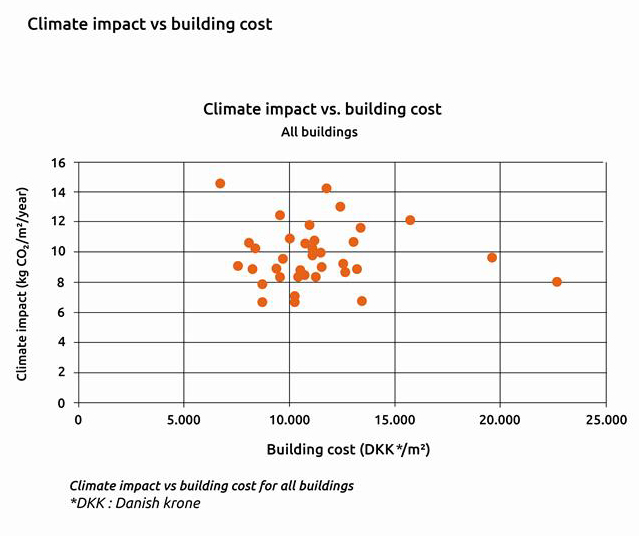
The results are clear: construction costs and CO₂ emissions show little correlation. In fact, several buildings with the lowest emissions are even among those with the lowest costs. This study also highlights that while certain sustainable choices may add to costs, other factors like building design play a far more significant role in determining the overall cost of a building.
Also read: No, A sustainable building isn’t more expensive! And other misconceptions…
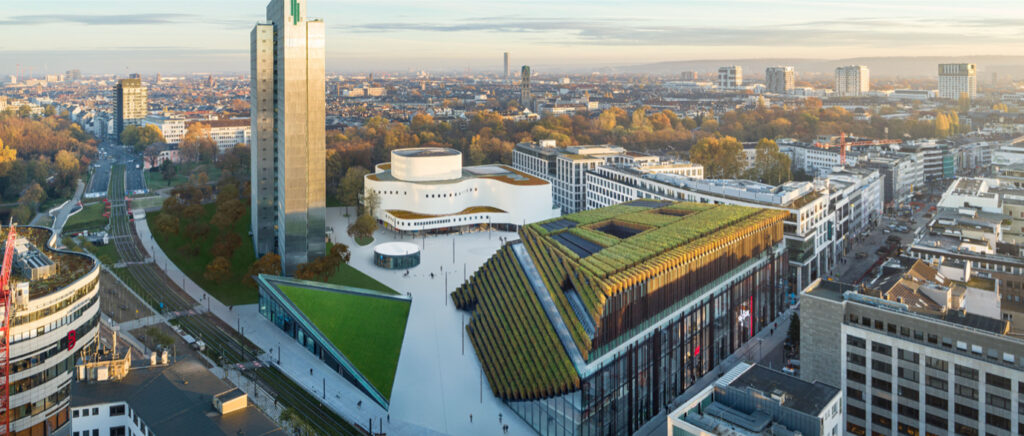
Observing the cost of innovation, but more than that
The perception that the cost of sustainable construction is higher is generally linked to the price of materials and solutions that have required a process of innovation in their design for decarbonation. While it’s true that some eco-friendly technologies carry a premium due to the investment in research and development, this isn’t universally the case. It needs to be analyzed on a case-by-case basis, depending on the solution and the characteristics of the market. With an underlying trend for several years: as the supply chains for more sustainable materials and technologies mature, design and construction costs of sustainable buildings are falling. Over the years, the industry is becoming more adept at delivering buildings with lower CO2 emissions.
But focusing on the costs of sustainable materials and products fails to consider all the principles of sustainable thinking. Entirely focused on the objective of reducing the carbon footprint, it allows us to ask the right questions from the start. Can we reuse or redevelop instead of building? Can we rethink the geometry of a building to make the most of every square metre while building less? This philosophy of “doing more with less” is a cornerstone of sustainable construction and goes hand in hand with a more economically frugal approach.
The sustainable construction mantra—“doing more with less”—goes hand in hand with a more economically frugal approach.
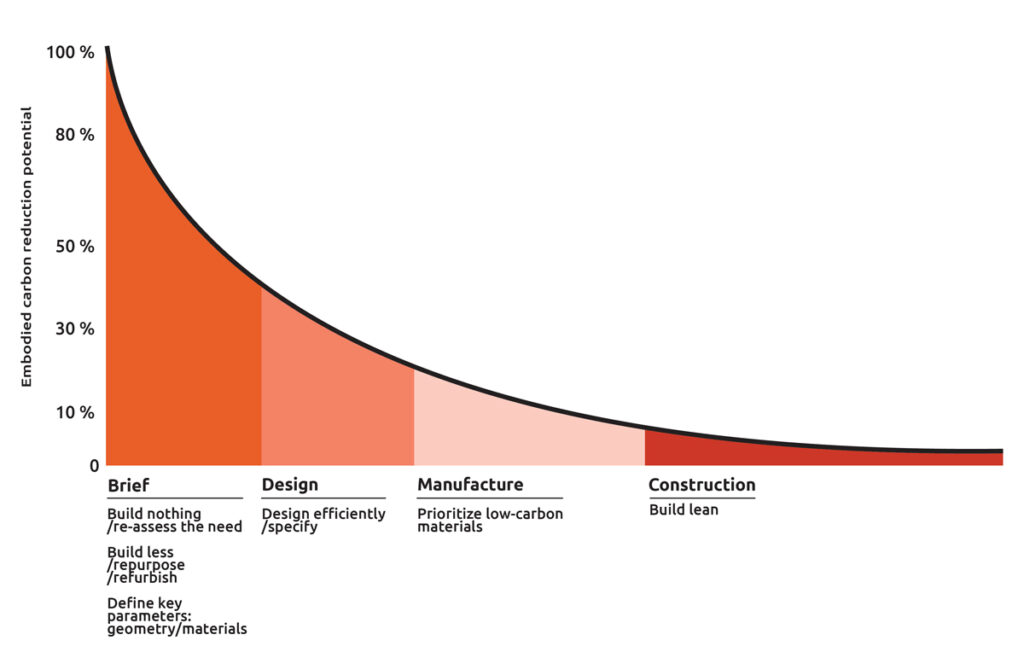
The graph above is from a recent report, Net-zero buildings: halving construction emissions today, published by ARUP and the World Business Council for Sustainable Development (WBCSD). It underscores the influence of the timing of decisions on the carbon reduction potential of a construction project. The earlier decisions in favour of decarbonisation are taken, the greater their impact. Strategic planning during initial briefing and design phases, with a focus on frugality and circularity, can dramatically reduce embodied carbon emissions.
As projects advance, however, the carbon-cutting potential diminishes. Favouring low-carbon impact materials, those seen to embody the image of sustainable construction but also with a higher cost, has in fact only a limited potential for reducing the project’s embodied carbon – by less than 30%.
Architectural and civil engineering firms should start each project by critically assessing whether new construction is necessary or if existing structures can be repurposed.
Report - “Net-zero buildings - halving construction emissions today”. ARUP / World Business Council for Sustainable Development
Think life cycle
Sustainable construction is by nature not just about the immediate impact; it’s about the long haul. And this temporal scope, necessarily extended to meet the challenge of the climate crisis, also enables sustainable construction to earn its credentials in terms of cost. It encourages us to consider the costs of a building over its entire life cycle, and not just at the time of construction. And yet, 75% of a building’s total expenses occur during its operational phase, encompassing upkeep, maintenance, repairs, and resource consumption such as water and energy. According to the World Green Building Council, by optimizing product longevity, energy efficiency, resource consumption and waste management strategies. a new sustainable building boasts 14% lower operational expenses than its traditional counterparts.
-14%
lower operating costs for a new sustainable building vs. a traditional building.
Moreover, sustainable properties offer a distinct market advantage. They are better valued and more profitable. As investors and occupants become better informed and concerned about the environmental and social impacts of the built environment, buildings with better sustainability credentials are more highly valued by buyers or tenants.
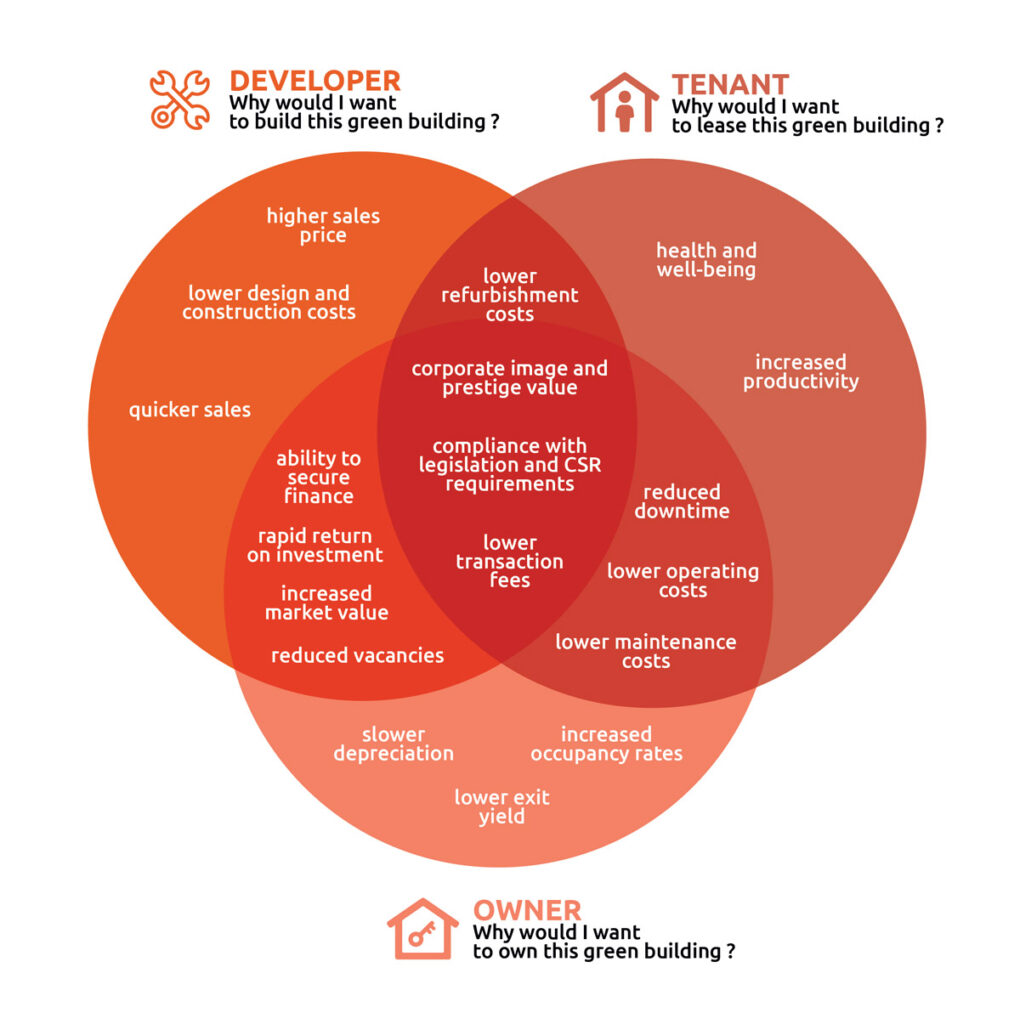
This graphic from the World Green Building Council’s report, The Business Case for Green Building, maps out the diverse benefits of sustainable buildings for developers, tenants, and owners. Each circle in the visualization highlights the advantages each group gains from green construction, with overlapping areas illustrating shared benefits such as cost savings and enhanced reputation. This convergence of interests among stakeholders underscores a strong, interconnected ecosystem that propels the growth of sustainable building practices.
The sustainable and affordable example 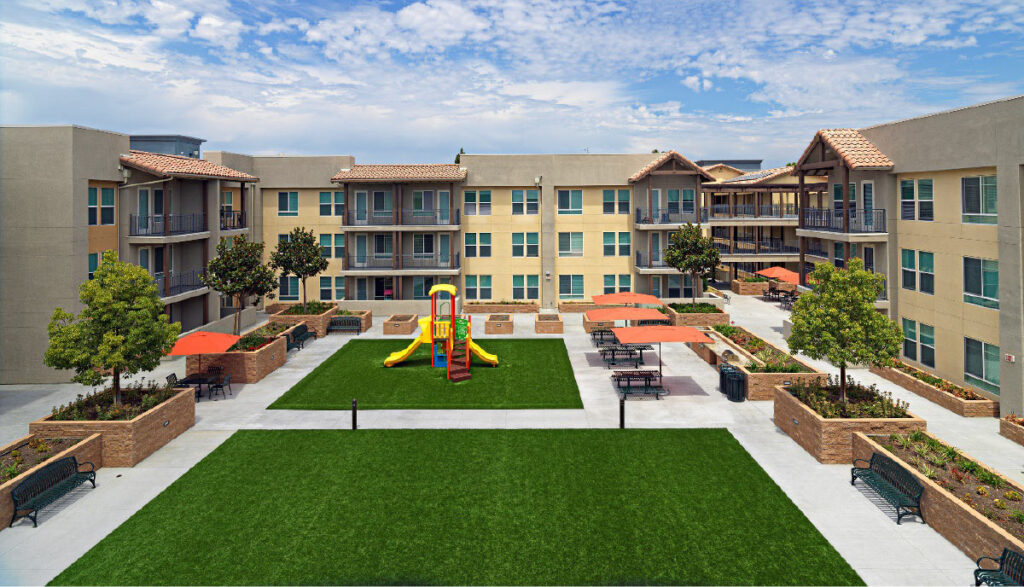
Legacy Square is an affordable housing complex in Santa Ana, California, recognized by the US Green Building Council for its excellence in sustainable construction. Certified LEED Platinum*, the project incorporates innovative solutions to both minimize its environmental impact and maximize its value.
A solar photovoltaic system supplies 36% of the building’s energy needs, while a high-performance building envelope and carefully designed green spaces improve rainwater management. Low-flow fixtures contribute to a 36% reduction in water use, and non-toxic materials promote healthier indoor air quality for occupants.
Legacy Square demonstrates that sustainable construction is not a luxury, but a smart investment that creates affordable, attractive and high-value housing.
*LEED Platinum is the highest level of certification in the Leadership in Energy and Environmental Design rating system developed by the US Green Building Council.
1 Sustainable Construction Barometer 2024: For 95% of respondents, sustainable construction appears to be a priority (67%) or important (28%).
Photo credits: © ingenhoven architects







